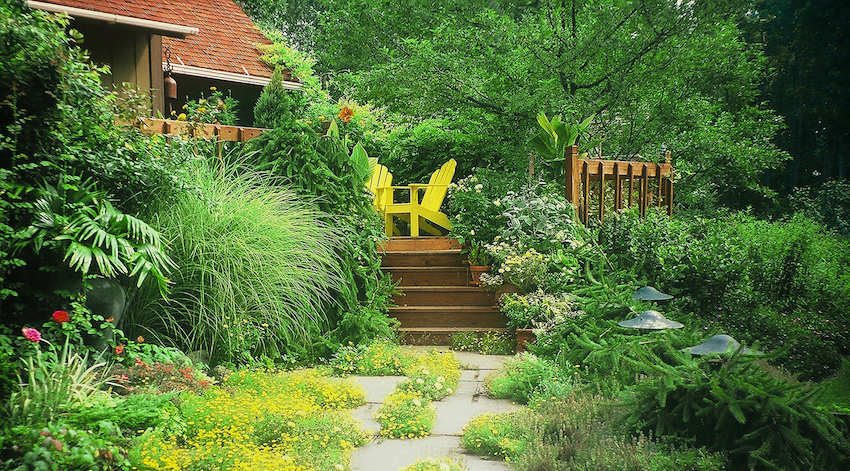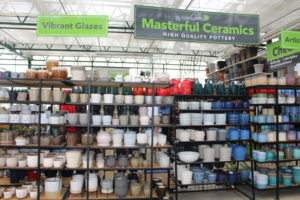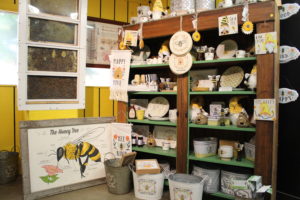
Evaluating a Landscape
 In “Garden Renovation: Transform Your Yard into the Garden of Your Dreams” from Timber Press, Bobbie Schwartz helps turn a problem- lled yard into paradise by evaluating the plants and features, determining what to keep and what to remove, choosing the right plants and design plans and knowing when to hire help. The gallery of before-and-after photos can provide ideas and inspiration for your customers to turn a tired garden into an enlivening retreat.
In “Garden Renovation: Transform Your Yard into the Garden of Your Dreams” from Timber Press, Bobbie Schwartz helps turn a problem- lled yard into paradise by evaluating the plants and features, determining what to keep and what to remove, choosing the right plants and design plans and knowing when to hire help. The gallery of before-and-after photos can provide ideas and inspiration for your customers to turn a tired garden into an enlivening retreat.
When a customer walks into your garden center, your opening line is: “How may I help you?”
What do you reply with when that person says that he or she wants to make changes in the landscape but doesn’t know where or how to start?
If you have a design component to your garden center, you immediately send the customer to meet with a designer. If you don’t, perhaps, without using up the rest of your day, you can make the following suggestions to your customer to help them put each of these components on his or her radar.
1. Create a list of your goals.
Try to make your goals realistic. If you can’t afford to create the Garden of Eden, create a vision that will make you feel good and enhance your property but won’t break the bank.
2. Prioritize your goals.
Almost no one can afford to make all the desired changes at once. Try to take the vision down into phases that can be concretized as time and money allow.
3. Establish a budget.
Instead of establishing an overall budget, gure out how much money you can spend annually over a ve-year period. Then start saving.
That will give you time to look at your vision and establish your priorities. Drive around and take pictures of landscapes that you wish you had. Tear pictures out of magazines or create a Pinterest or Houzz page with boards for the various projects you have in mind.
4. Evaluate your existing landscape.
You need to start by evaluating your existing landscape in order to decide what, if anything, to keep and what to get rid of.
Few people realize how important the quality of the soil is. Gardeners everywhere complain about their soil. If it’s sandy soil, it drains so quickly that it’s dif cult to retain moisture. If it’s heavy clay, it drains poorly. Before planting anything new, you may need to amend the soil.
Don’t just pull out the shrubs you hate and then come to us and look for plants that appeal to you.
If you want the new plants to live, you must think about matching the plants to the site. You must evaluate the strength and duration of shade and sun and the amount of moisture in the soil as well as the quality of the soil. This information is crucial.
Where does storm water go? Does it pool in your backyard? Should you consider installing a rain garden? Do you have slopes that are difficult to mow?
What is your sidewalk like? Is it safe? Is it wide enough for two people to walk side by side? Does the material complement your house? Is it just a means of going from Point A to Point B (the front door) or is it a lovely journey?
Is your driveway wide enough so that a visitor getting out of the car doesn’t have to step into the mud or a wet lawn? Is there a way to widen it without dismantling it?
Do you have a side yard that is merely a means of getting from the front to the back but otherwise ignored? What about turning it into something special?
Do you need screening of some sort? Air conditioners are ugly yet they are often installed in the front yard. A simple planting can disguise them. What about garbage cans? A gated fence would hide them and keep animals out of them.
When customers tell you their goal is to simply “make changes to the landscape,” these questions can act as a starting point to help understand what they really mean by that. Helping them succeed long term instead of selling a few quick plants will help them return time after time.


















 Videos
Videos





